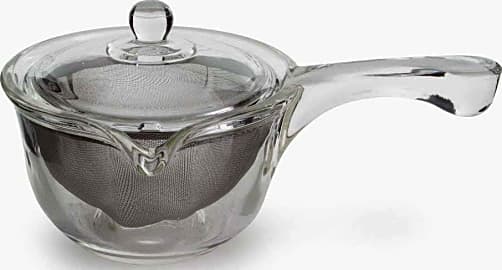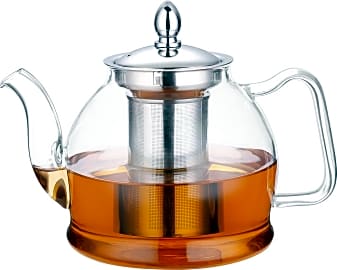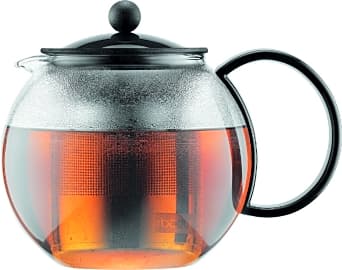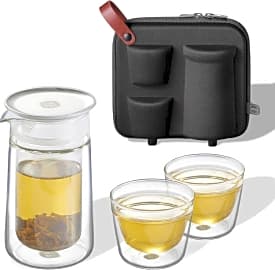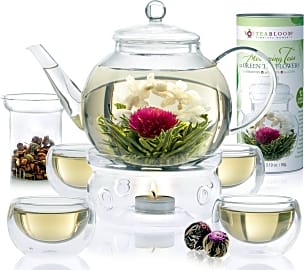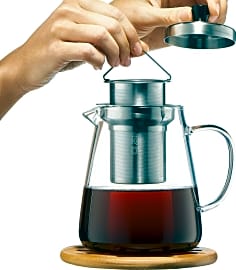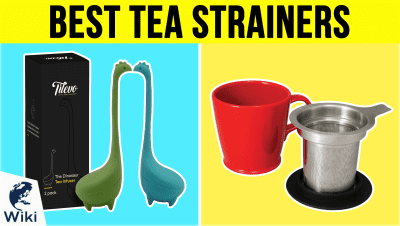The 10 Best Glass Teapots

This wiki has been updated 40 times since it was first published in February of 2016. Whether you're an orange pekoe, lapsang souchong, or Earl Grey kind of person, these glass teapots are a great way to bring out the flavor and aroma of your favorite blends. Both practical and elegant, they come with infusers to brew up the perfect loose leaf cuppa every time, and you can also use them to create impressive blooming tea displays when you're entertaining guests. When users buy our independently chosen editorial picks, we may earn commissions to help fund the Wiki.
Editor's Notes
April 16, 2020:
Glass teapots are attractive but require careful use, and tend to be more fragile than other types, such as cast iron teapots. Nevertheless, we have looked for options that are relatively durable, so you can use and enjoy them. Because we are concerned about the fragility of the butterfly on the lid, we've opted to remove the Teabloom Wings of Love and replace it with the Teabloom Celebration gift set. The latter is complete with everything required for a relaxing afternoon teatime, including a dozen blooming teaballs. As you would imagine, it makes a fine gift for tea lovers, as does the Zens Mobile Moon, a cup and pot set that nestles in an EVA case for travel.
If it's a simple, at-home choice you're looking for, the popular Hario Cha Cha Kyusu Maru remains an option that's hard to beat. It has thoughtful touches that make it a cinch to use, but do note that it is not appropriate for stovetop use. That's why we've added the Hiware Kettle, which can be used on gas or electric stovetops on medium heat. Both of the aforementioned models come with a tea strainer; for something a little different, we've opted to add the Bodum Assam, which is similar to a French press. The bottom of its infuser is solid, which allows you to control the strength of your tea — simply use the plunger when your tea has steeped long enough. You can also make weaker or stronger brews with the Emoi Brewing Cup and its removable strainer. It features an attractive bamboo lid that holds the strainer once it has been removed, but it doesn't fit on snugly enough for spill-free travel.
Special Honors
Casarialto Lotus With a design based on the whimsical world of "Alice in Wonderland," the Casarialto Lotus is sure to draw more than a few appreciative stares, which should make up for its rather steep price. Inside each mouth-blown piece, you'll find a delicate lotus flower that perfectly complements the green leaf resting on the lid. casarialtoveniceglass.co
Wedgwood Paeonia Blush The curvy, elegant glass body of the Wedgwood Paeonia Blush is topped with a ceramic, gold-accented lid that matches the rest of the cups and dishes in the Paeonia collection. As fans of Wedgwood might expect, this model requires no small investment, but it's the type of piece that you can pass down to your children or grandchildren. wedgwood.com
Tom Dixon Bump The Tom Dixon Bump was created with the aesthetic of laboratory apparatus in mind, with a minimalist feel and a nod to the alchemy of tea-making. This pot has an ample capacity of 1 liter, but it should be handled with care and is not safe for the dishwasher. tomdixon.net
A Brief History Of Tea
Once the new queen was seen drinking it, tea became a standard drink in noble circles.
Wars have been fought because of it. Relationships have ended over it. And some monsters even put sugar in it. Yes, I'm talking about tea — and, as you might expect, its history is as rich and varied as its flavors.
The plant is believed to have originated thousands of years ago in what is now northern Myanmar or western China, and the Chinese province of Yunan is believed to be the first place where someone boiled tea leaves to make themselves a drink. It soon became a staple of the Chinese diet, used for both its flavors and curative properties. Around the 6th century C.E., tea was introduced to Japanese monks, who took to it instantly and made it as much a part of their culture as the Chinese had before them.
While tea became hugely important in Asia, Europe was slow to adopt the new beverage. In the late 1500s, Portuguese traders brought it back to the continent from their voyages to the East, but the Dutch were the first to import it on a large scale.
Great Britain, although crazy for the stuff now, was one of the last countries in Europe to join the tea-drinking craze. There's no mention of tea in Britain until 1658, when a newspaper ad urged readers to celebrate "Chinese Drink Day" at their local coffeehouse.
It would be the country's poor financial situation that would eventually cause the drink to be accepted by the populace. King Charles II, finding his government deeply in debt, agreed to marry the Portuguese princess Catherine of Braganza. In addition to a wife, Charles was awarded a substantial dowry from her father — including a chest of her beloved tea.
Once the new queen was seen drinking it, tea became a standard drink in noble circles. The East India Company began to import massive amounts of the stuff into England, but soon found themselves beset by high taxes and competition from smugglers. In fact, these tea taxes were so high that an outraged mob in Britain's new American colonies boarded three of the East India Company's ships and threw 342 chests of tea overboard in protest. This event, known as the Boston Tea Party served as a precursor to the American Revolution.
Tea went on to become so entrenched in British life that, when WWI broke out, the government took control of production to ensure that there would be no interruption of the supply. They would do this again during WWII, rationing it out to their citizens (and possibly winning the war accidentally in the process, as nothing will make the British fight harder than taking away their tea).
Today, tea is enjoyed around the world, and the early 20th century creation of the tea bag has made it more convenient to drink than ever before. While we may never know for sure how the tradition started, one thing is for certain: tea drinking is here to stay.
Choosing A Glass Teapot
The type of tea you most often drink is likely the biggest consideration when choosing a teapot. If you're a loose-leaf drinker, then one with an infuser is probably going to be your best bet. If, however, you enjoy watching the leaves curl and bloom as the tea steeps, then make sure that you get a pot that's the right size for the leaves you'll be using.
The type of tea you most often drink is likely the biggest consideration when choosing a teapot.
Of course, you should also make sure you can actually use whichever pot you end up buying. This means double-checking to see if it's suitable for the type of stove you own. Not all glass teapots can be exposed to direct flame, and if yours doesn't explicitly say that it can handle the heat, then it's better to play it safe and keep it away from the fire.
Also, keep in mind that glass teapots can stain very easily, so pick one that you'll be able to thoroughly clean when you're done. While the stains shouldn't affect the taste or safety of the tea, no one wants to drink out of a dingy-looking container, so make it easy on yourself and choose one that you can really scrub down. Some pots are dishwasher-safe, so that may be the route if you're not interested in spending an afternoon trying to eliminate old tea residue.
After all, that's what the butler's for, right?
Health Benefits Of Drinking Tea
You already know that tea is delicious, but were you aware that it may actually be good for you, as well?
Oh, and if you have yourself taking tea with the Queen...try not to bring up that whole Boston Tea Party thing.
Most teas, including green, black, white, and oolong, are filled with antioxidants that could potentially help fight a wide range of diseases, including some cancers. Of course, if you really want to give your body an antioxidant boost, you can use your cup of tea to down some krill oil supplements.
Tea is especially good for your liver, helping you to ward off all manner of conditions, including cirrhosis and hepatocellular carcinoma. Not only that, but regular tea consumption can reduce your risk of Type 2 diabetes, which is known to wreak havoc on your liver.
Green and black tea are fantastic for your ticker, as well, lowering risk factors like high cholesterol. Besides, can you imagine someone ever having a heart attack while peacefully enjoying a cup of tea?
Of course, it's not a panacea, and there's little proof at this point to support some other claims made on its behalf. It hasn't been shown to strengthen your bones, it probably won't help you lose weight, and it's not the best bet to soothe an upset stomach. Still, these minor quibbles shouldn't deter you from pouring yourself another glass.
Oh, and if you have yourself taking tea with the Queen...try not to bring up that whole Boston Tea Party thing. It's still a sore subject.


